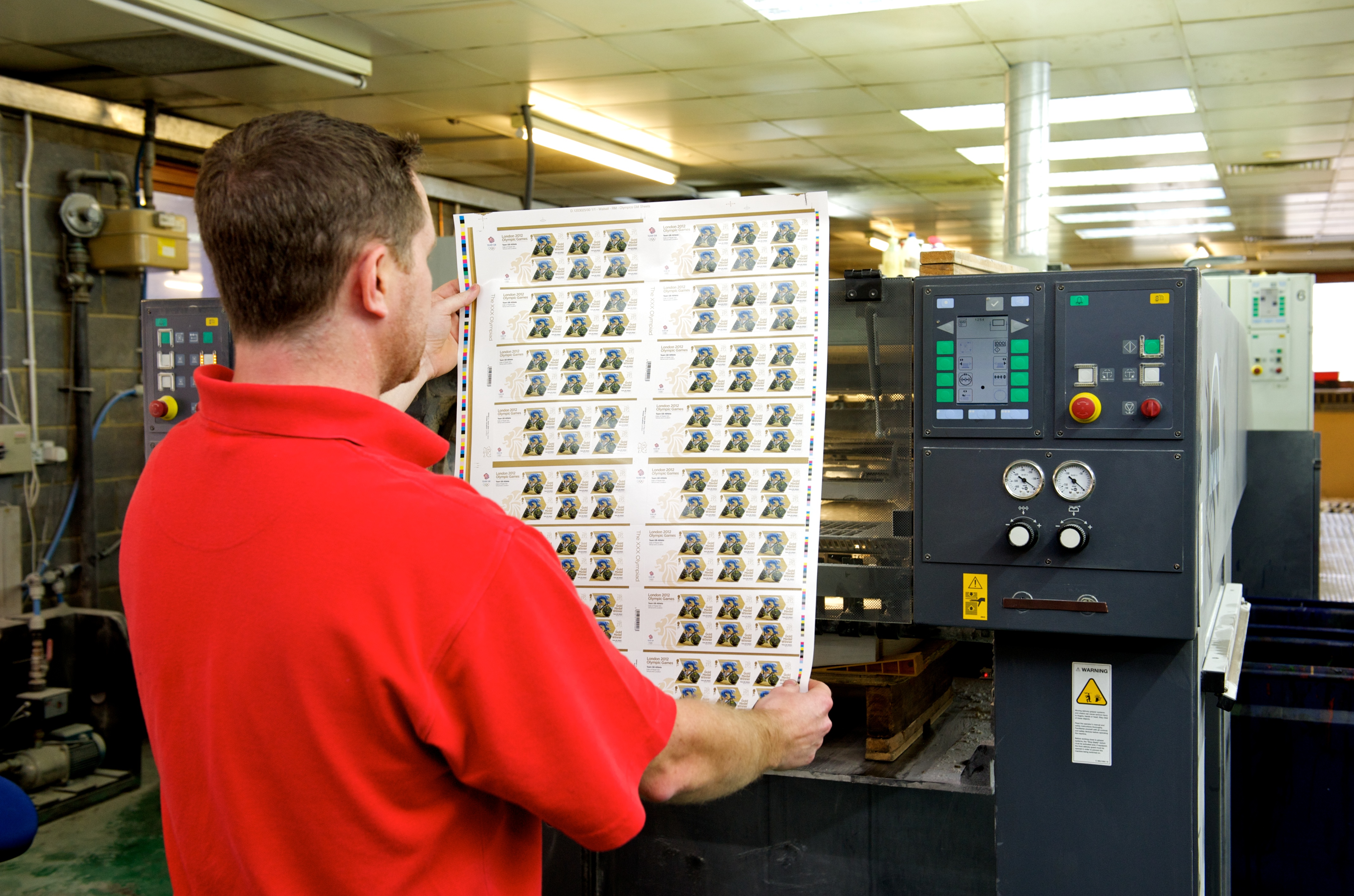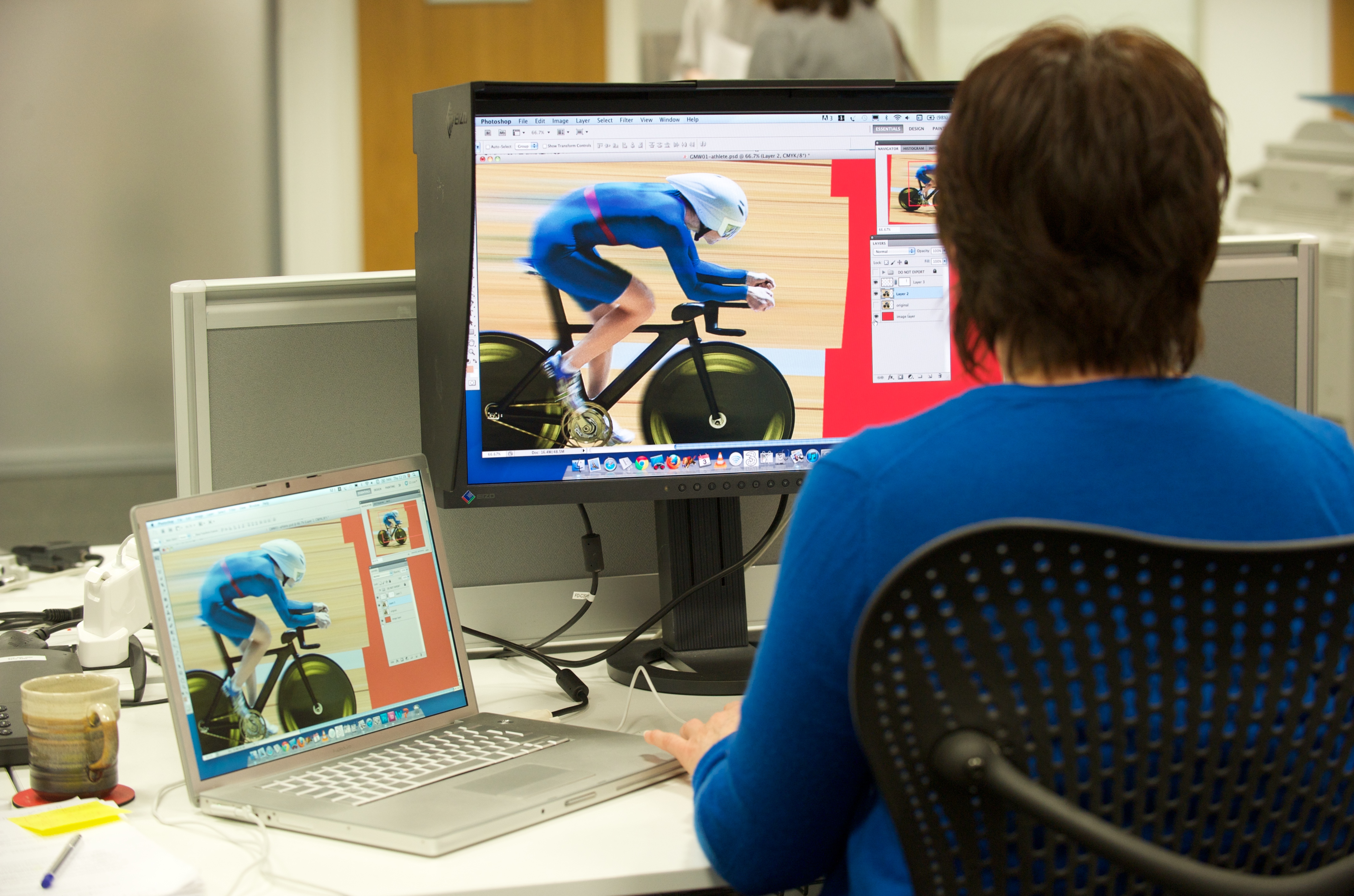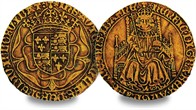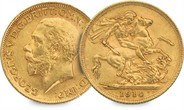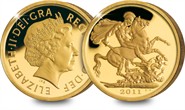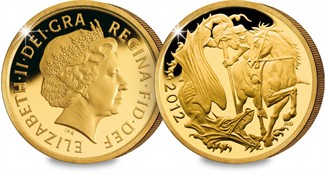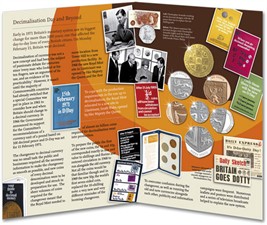Within hours of a British gold medal winning performance at London 2012, Royal Mail will set about producing an exclusive Team GB issue to mark their sporting triumph. Here’s how they’ll produce Britain’s first ever ‘next day’ stamps this summer …
Printing
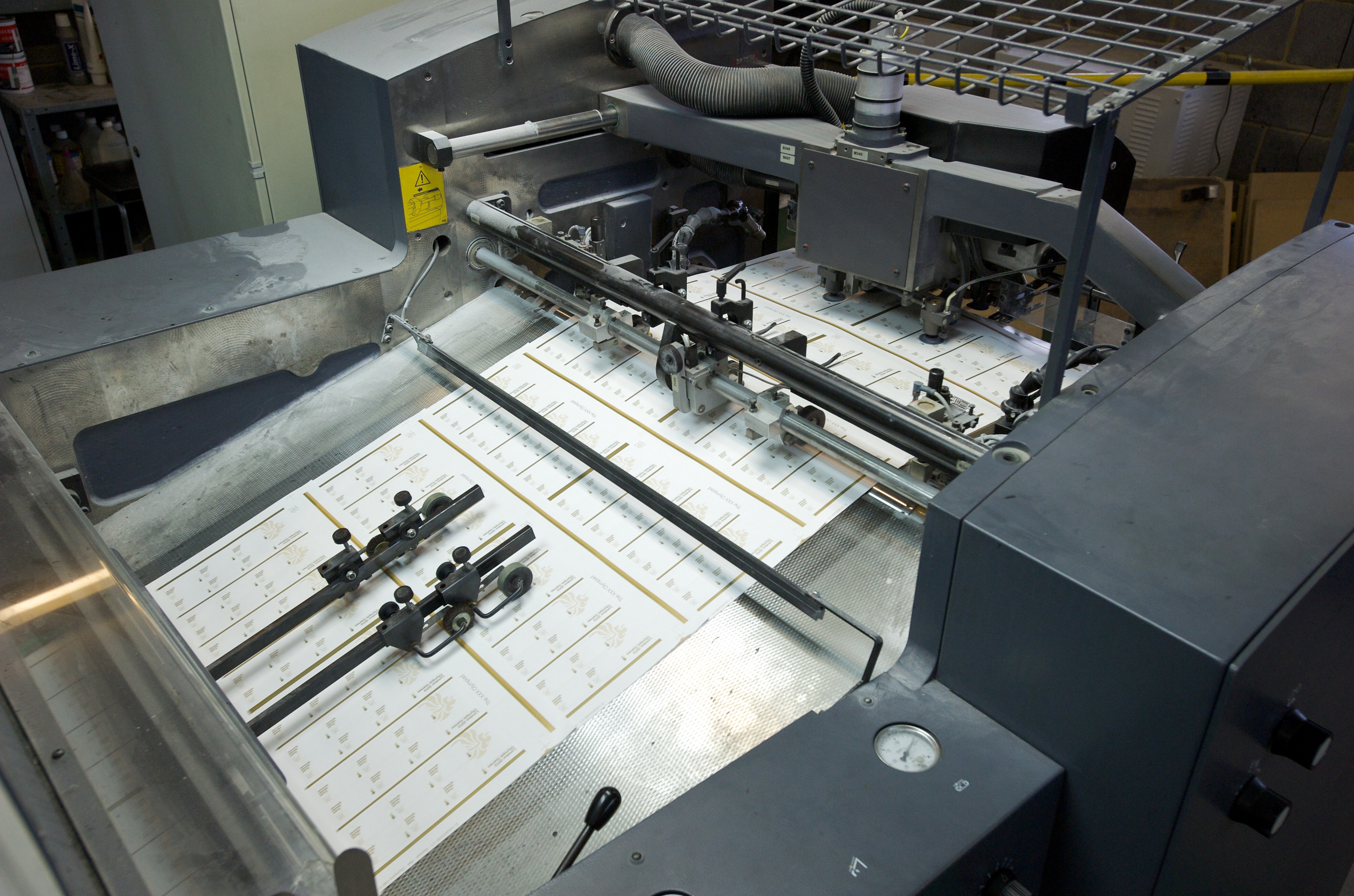 Each Team GB Gold Medal Stamp issue will feature a Miniature Sheet of six stamps. To save time, sheets will be pre-printed in gold with common details such as the 1st Class value, the Queen’s head and the official London 2012 logo. The Team GB emblem and the title ‘London 2012 Olympic Games’ will also be printed in advance.
Each Team GB Gold Medal Stamp issue will feature a Miniature Sheet of six stamps. To save time, sheets will be pre-printed in gold with common details such as the 1st Class value, the Queen’s head and the official London 2012 logo. The Team GB emblem and the title ‘London 2012 Olympic Games’ will also be printed in advance.
Design
Working alongside Getty Images, the Games’ Official Photographic Agency, Royal Mail will receive a selection of images featuring the winning team or athlete as soon as possible after their win. Designers will have just one hour to choose the best action shot to fit the template and complete the artwork.
On receipt of the artwork from Royal Mail, six regional printers will then digitally overprint the athlete’s image, name and the winning event.
Distribution
The finished sheets will be collected from the printers and delivered to 500 Post Office branches across the UK for sale the morning after the gold medal win. They range from Aberdeen to Bournemouth, Belfast to Cardiff and include a large number in London.
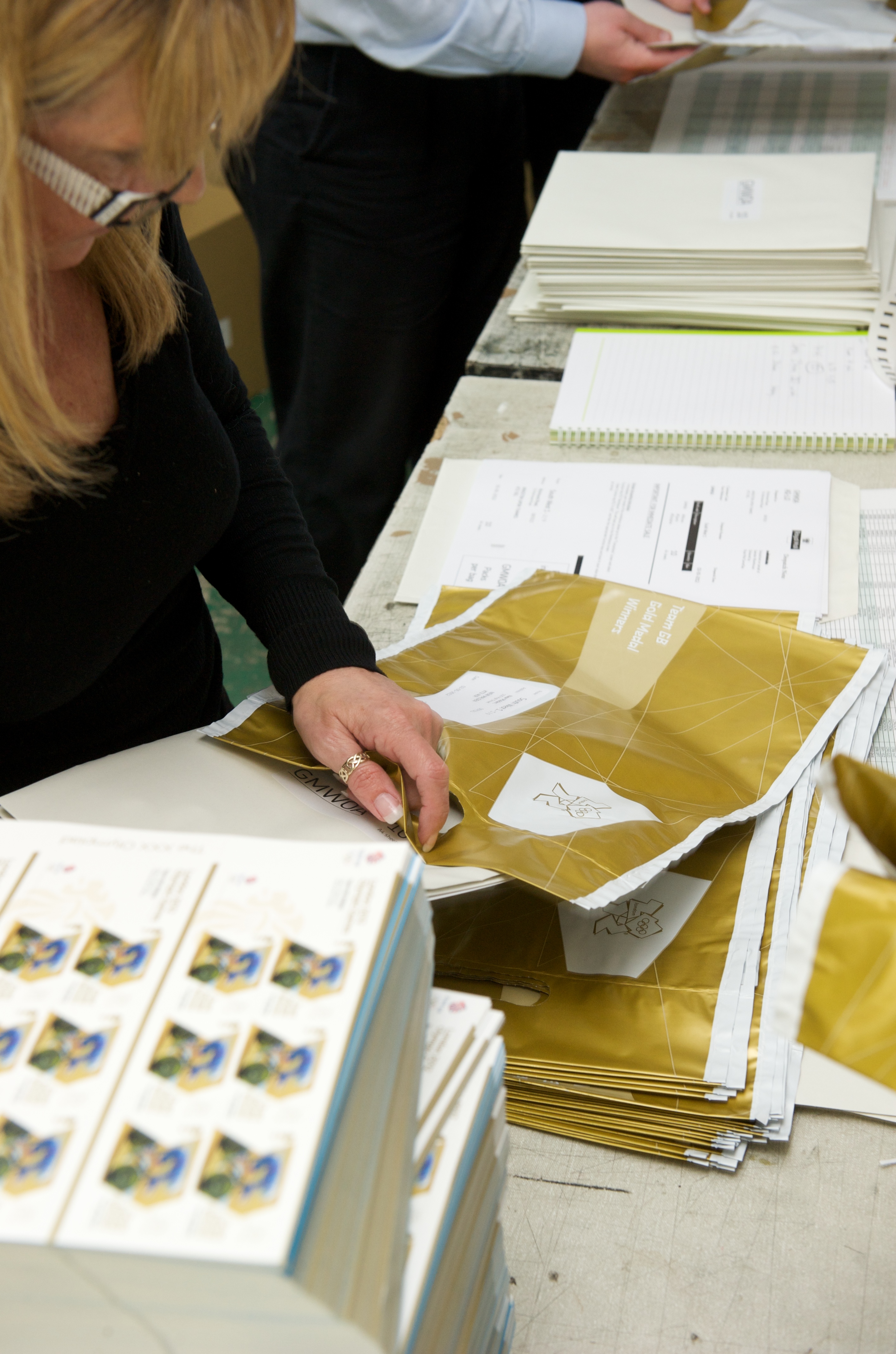 “All of these branches will be open on Sundays, many for the first time, during the Games to allow customers to buy the stamps as soon as they become available,” Royal Mail spokesperson. Another 4,500 Post Offices will receive the Gold Medal Stamps within the following week.
“All of these branches will be open on Sundays, many for the first time, during the Games to allow customers to buy the stamps as soon as they become available,” Royal Mail spokesperson. Another 4,500 Post Offices will receive the Gold Medal Stamps within the following week.
Royal Mail’s ‘Welcome’ Mini Sheets
To coincide with the opening of London 2012 on 27th July and the Paralympic Games on 29th August, Royal Mail will also issue two special miniature sheets. The four stamps on each sheet portray powerful images of athletes in action alongside an iconic London landmark such as the London Eye or Tower Bridge. There are
two 1st class stamps and two £1.28 stamps per mini-sheet. This is the first time a postal administration has issued a miniature sheet to mark the opening of the Paralympic Games.
Royal Mail released its first Olympic stamps in 1948, when the Games were held in London for the second time (first held in 1908). However, this will be the first time ever it has issued stamps to celebrate gold medal winners.
The gold Sovereign is one of the most famous coins in the world. “Sovereign” is the name we give to a gold coin, originally of one pound sterling value. The first pound was struck in 1489 during the reign of Henry VII. It was a magnificent coin showing on the obverse the king sitting a throne, hence the name “Sovereign.”
The first Sovereigns
Henry VII ordered the Sovereign to be struck as part of the process to stabilise the English economy after decades of civil war. The King commissioned the great German engraver Alexander of Bruchsal to design the coin, showing Henry VII enthroned on the obverse and a Tudor rose enclosing a shield on the reverse. Its value was 240 silver pennies or twenty shillings. This was the first Sovereign – it was struck in 23 carat (95.83% fine) gold.
Debasement and replacement
King Henry VIII increased the sovereign’s value from 20 shillings to 22 shillings then 22 shillings and 6d. His son, Edward VI fixed the value at 20 shillings and also issued a half sovereign, a “Fine Sovereign” of 30 shillings and a double sovereign. After his death in 1553, his half sister, Queen Mary issued only a “Fine Sovereign” of 23¾ carats. Mary died in 1558 and her successor, Elizabeth I re-introduced a “standard sovereign” of 22 carats, worth 20 shillings, circulating alongside the fine sovereign. James I eliminated the fine sovereign and introduced a smaller, lighter sovereign of 22 carat fineness in 1604. This was to be the last sovereign struck in England for 213 years.
Unite, Laurel, Broad and Guinea
After the Sovereign there followed a succession of coins, of roughly sovereign value. First came the “Unite” of one pound value. It was so called in honour of the uniting of the kingdoms of England and Scotland. In 1612 the Unite was revalued at 22s before being replaced in 1619 by the “Laurel.” It survived the Civil War and was circulated during the Commonwealth, although a smaller 20 shillings coin, “the Broad”, was briefly issued in 1656. The Unite was issued for two years by the restored Charles II but was replaced by the machine-made “Guinea” (so called because it used gold from Guinea, West Africa) in 1668.
The Sovereign reigns supreme
In 1809 The Royal Mint was moved from the Tower of London to a new site on Tower Hill. In 1813 the last Guinea, with a value of 21 shillings, was struck by The Royal Mint but a huge transformation in how British coins were produced was about to take place. Using the new steam-powered minting machines of Boulton and Watt, the Mint could now produce superior coins more quickly and on an industrial scale. The Mint also now issued coins with a face value greater than their intrinsic value – the world’s first “token” coinage – and in 1817 came the return of the gold Sovereign after 213 years. On its reverse was the iconic engraving of St George and the Dragon by the brilliant Italian engraver Bendetto Pistrucci. This is essentially the modern gold Sovereign we know today, minted to 22 carat (91.7%) fineness, 22.05 mm in diameter and weighing 7.988 g.
The George & Dragon design continued to be used exclusively on the reverse of Sovereigns until 1825, when a shield design was introduced. The shield continued to be used intermittently throughout the reigns of George IV, William IV and Queen Victoria. As the British Empire spread across the globe, the sovereign went with it, accepted and trusted in even the most remote parts of the world. In 1855 the Sydney Branch of The Royal Mint was established. Uniquely, its Sovereigns (identified by the mintmark “S”) were completely different in design to the British originals. Other Royal Mints striking Sovereigns were opened at Melbourne, Perth and Ottawa, Canada.
A new life for the Sovereign
In 1917, under pressure of the war effort, The Royal Mint stopped production of the gold sovereign, replacing it with paper currency for everyday circulation. Although the Mint produced some Sovereigns in 1927 and proof sets in 1937 and 1953, this effectively marked the end of the Sovereign as currency. However, in 1957, in response to demand from collectors and investors, The Royal Mint issued bullion sovereigns almost every year until 1968, resuming regular production in 1974. In 1979 the Mint issued proof versions, which were so popular the practice continues to this day.
In 1989 the 500th anniversary of the sovereign was marked by a special commemorative proof issue, while the Queen’s 2002 Golden Jubilee saw the shield design used, in modified form, on the reverse of a Sovereign for the first time since 1887. Most recently, the 2012 Sovereign featured a new reverse design by Paul Day to mark the Queen’s Diamond Jubilee. Over the past decade bullion and proof Sovereigns have proved a sound investment. As long as there’s a pound, it seems likely we’ll still have a Sovereign.
The Royal Mint is a government-owned company that produces and distributes all the UK’s coins. Whether you are collecting historic coins or commemorative coins produced for specific anniversaries or events such as London 2012, knowledge of the function and history of The Royal Mint will add to your enjoyment.
Origins
By the 7th century Anglo Saxon kings had established mints within their kingdoms. By the time of Aethelred “The Unready” (reigned 978-1016) there were mints in 70 towns and cities. By the end of the 13th century the minting resources of Londonwere housed within the walls of the Tower of London. The coins were struck by holding a metal blank between two engraved dies and striking the top die with a hammer, hence the name “Hammered” coins. In 1660 the restored King Charles II introduced new coin-making technology fromHollandand hammering was replaced by rolling mills and screw presses, which produced better quality coins more quickly – “Milled” coins. In 1696, Sir Isaac Newton became Warden of The Royal Mint and his first task was to address the problems of forgery; he later supervised the great recoinage of 1696. In 1699 he became Master of The Royal Mint.
The move to Tower Hill
In 1797, Matthew Boulton won a contract to produce coins for The Royal Mint. The coins were of outstanding quality, struck using the latest steam presses. The Royal Mint decided to adopt the new technology, but the premises at theTower of London were too small. A new purpose built factory on a 4-acre site of a former Abbey on nearby Tower Hill was commissioned, equipped with the latest steam presses. These two-ton monsters were capable of striking 100 coins a minute of vastly superior quality. They provided The Royal Mint with the capacity to cope with the demands of the great recoinage of 1816.
In the next four years the mint struck 40 million shillings (5 p), 17 million half crowns (12 ½ p) and 1.3 million crowns (25 p). Over the following century the products of The Royal Mint were circulated throughout the British Empire. Branch mints were opened in Sydney, Melbourne, Perth, Ottawa, Bombay and Pretoria, which together produced almost as many gold sovereigns as the Mint itself.
Changing times
In 1816, The Royal Mint had produced the world’s first “token” coinage – coins with a face value higher than their intrinsic worth. In 1917, The Royal Mint stopped production of gold sovereigns, replacing them with paper banknotes. In line with post-war shortages, the silver content was removed altogether in 1947, resulting in cupro-nickel “silver” coinage. The Royal Mint however continued its vigorous commercial approach to the minting and marketing of coins, seeking orders from all over the world. By the second half of the 20th century, The Royal Mint had become one of the world’s most successful coin exporters.
Decimalisation
After World War II, the next challenge facing The Royal Mint was decimalisation of the UK coinage. Although there had been previous unsuccessful attempts to decimalise our currency and bring us in line with the Continent, during the 1960s the movement gathered momentum. On 1st March 1966, the Government officially announced the changeover to decimal coinage.
In 1968 the Royal Mint introduced 5p and 10p coins and in 1969 came the brand new 50p (or ten shilling) piece, designed to replace the ten-shilling banknote. “D-Day” itself came on 15th December 1971 and went off amazingly smoothly. The old penny and three-penny bit were withdrawn sooner after and the sixpence (2.5 p) followed in 1980. The £1 coin arrived in 1983, while the 5p, 10p and 50p coins were re-sized in the 1990s.
The need to mint hundreds of millions of new coins, and meet the growing demand from overseas customers, meant that the Tower Hill mint was inadequate. In December 1968 the Queen opened the first phase of the new Mint production facility at Llantrisant, South Wales. The last coin, a gold sovereign, was struck at Tower Hill in November 1975.
The Royal Mint today
Today The Royal Mint is one of the world’s foremost producers of coins and medals, renowned for its quality, creativity and integrity. At its state-of-the-art purpose-built plant at Llantrisant, the Mint produces 90 million coins and blanks a week – almost five billion coins a year. It supplies all theUK’s circulating legal tender coins circulating and is the world’s largest exporter of coins. The Royal Mint employs more than 900 people and operates round-the-clock for 52 weeks a year.
The Royal Mint also meets the needs of a growing number of collectors, in Britain and abroad. People have always collected the products of the Mint, of course, but over the past 50 years the Mint has made great efforts to meet the needs of collectors. In 1957 the Royal Mint resumed production of sovereigns and in 1979 struck proof sovereigns, still popular today. The Mint issued a commemorative crown (25p) for the Coronation in 1953 and for Winston Churchill in 1965. Since then Royal Mint commemorative coins, usually crowns, have become eagerly awaited by collectors. London 2012 and the Queen’s Diamond Jubilee have given collectors a huge opportunity to own in 2012 and a chance for The Royal Mint to showcase its product range. The Royal Mint has also been honoured with the task of producing the medals to be awarded at London 2012.

